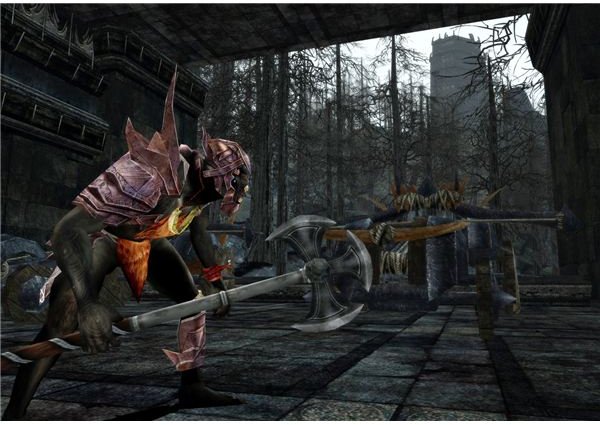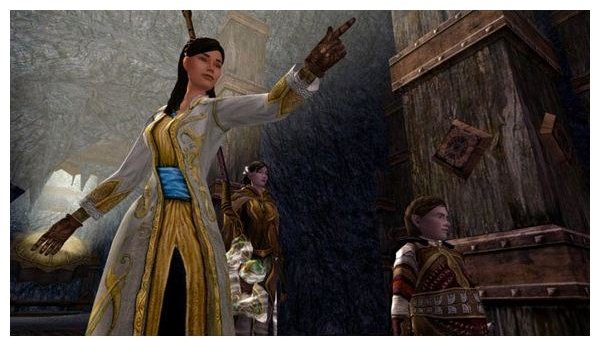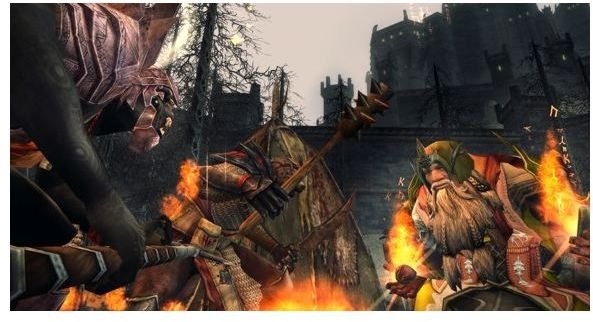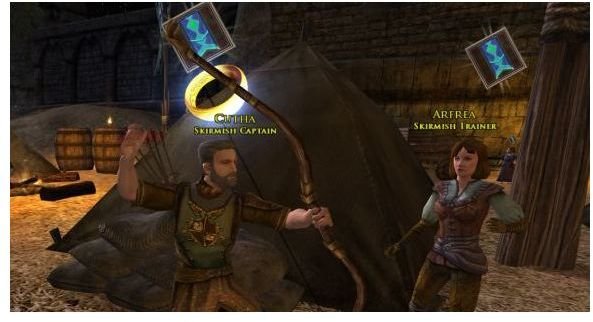An Introduction to LOTRO's Skirmish System

A Quick Overview of Skirmishes
Skirmishes, new in the Siege of Mirkwood expansion, are semi-randomised and scalable instances that can be participated in from almost everywhere in the LOTRO game world. They can be played solo, or in a group of three, six or twelve people, and can be heavily customized to provide an easy session, a level appropriate challenge or very difficult fight.
Skirmishes take place in a variety of locations that most players will already be familiar with, such as Bree’s Prancing Pony Inn or the famous Weathertop Hill. You won’t need to travel to these locations to help defend them though, because skirmishes are joined from a new skirmish menu. So unless you’re already in another instance you can pop in to a skirmish at any time. And that’s the main idea behind skirmishes: they’re designed to last around only 30-40 minutes, so player’s can jump into one, enjoy a quick, combat heavy scenario and then seamlessly return to their regular questing and exploration. By doing so, players will have the chance to compliment their experience growth as well as earn a large variety of rewards, all with a minimum of effort needed to get organised and participate.
Randomisation and Scaling: No Two Fights are the Same
Skirmishes are designed to have a high replay value, and in order to accomplish this they are both randomised and scalable. The former means that the types of enemies players encounter and the optional objectives they can complete will vary with every skirmish, while the latter gives players some control over the difficulty of the skirmish in order to keep them accessible at all levels.

Since skirmishes are supposed to be short and repeatable, an obvious problem emerges where they could quickly become too repetitive and therefore boring. Randomisation takes care of this problem in a few different ways. First, the enemies you fight will change frequently, within reason so as to fit thematically. So in one skirmish you may encounter a group of bandits at a certain point, but reach that point a second time and you’ll be forced to deal with a couple of very tough orcs. Each skirmish will also be given a pair of optional objectives selected from a large list unique to each skirmish. Details on these objectives won’t be given, meaning that it’s up to the players to explore the skirmish and track them down. There are special rewards waiting for players who track down a large variety of these encounters. Finally, most skirmishes will feature enemy lieutenants, which basically make for boss fights. Which one shows up is random, but they all have a few unique tricks and skills. While players can usually beat them through traditional combat, figuring out their weaknesses will make things much easier.
All of the above is random, but players have some direct control over skirmishes as well. As mentioned, there are one, three, six and twelve man versions of each skirmish, but players can also select the level and a difficulty. This means you can get a different level of challenge in every single skirmish, and these selections also have an effect on what sort of rewards players receive.
Soldiers: Your Best Friend in Skirmishes
Skirmishes are supposed to represent notable conflicts between the forces of good and evil in Middle Earth. To demonstrate the scale of these battles, and to provide some variety to the gameplay, each player that participates in a skirmish will be accompanied by a soldier. Soldiers are AI controlled characters that fight alongside you. They’re semi-autonomous, in the sense that you can only issue basic commands to control them. You have much less say over their actions than, for example, a Lore-Master does over his pet. However, that doesn’t mean soldiers are generic NPCs; far from it. Each soldier can be heavily customized and grows stronger and more unique right alongside the player’s character.

For starters, you can choose your soldier’s personal traits, such as race, clothing, hair colour, etc. More importantly, you can choose to train your soldier in a variety of different “roles”, which represent various combat abilities and styles of play. For example, if your character is a hunter, you can train your soldier in protection skills to soak up damage while you dish it out. Or if you’re a guardian, you can teach your soldier healing skills so they can patch you up while you tank enemies. Basically, roles are designed to compliment the abilities of your main character.
As you play skirmishes you’ll be able to acquire a variety of items and skills to make your soldier unique. Some will be purely cosmetic, giving your soldier a look that separates him from others on the field. You’ll also be able to equip your soldiers with various traits that enhance their abilities, such as giving them increased health, power or critical hit ratings.Designing your soldier properly should prove to be a very rewarding experience.
Rewards, Loot and Cold Hard Cash
Of course, the best part about any MMO experience is collecting all the loot, and skirmishes are no exception. The amount of goodies that can be won from skirmishes is staggering, and because of the sheer variety a streamlined system has been implemented, simplifying the process and giving players a great deal control over what they acquire. Naturally, players will earn experience and item experience from all their kills, as well as a fair chunk of money from any bosses that are defeated. However, most rewards will come in the form of skirmish marks. These are barter items that can be traded with NPCs at skirmish camps for many different kinds of rewards. Skirmish marks are earned in a variety of ways, such as capturing a control point or killing a boss. However, what most effects the number of skirmish marks that players receive is the level and difficulty of the encounter. A level 60 character that cruises through an easy, level 40 skirmish is going to get a minimal amount of marks, while a level 45 character that bests a difficult, level 50 encounter will really rake them in.

So what can skirmish marks get you? Well, pretty much everything. Weapons, armour, jewellery, legendary items, crafting items, cosmetics, provisions and even certain hard to find quest items; basically anything you can acquire in LOTRO can be earned through skirmishes. These rewards are designed to compliment rewards earned in other parts of the game, so raid and quest rewards won’t become obsolete. However, a massive variety of rewards are opened up for those who put time and effort into skirmishes. They can be acquired from skirmish camps, which are outside every major city. So jump into a skirmish, earn some marks, and go get yourself some hard earned loot.
This post is part of the series: A Guide to Lord of the Rings Online’s Skirmish System
LOTRO’s new Skirmish system is big, and the way it’s played is very different from the rest of the game. This guide will give you a quick overview of the system before showing you the details of its most important aspects.
